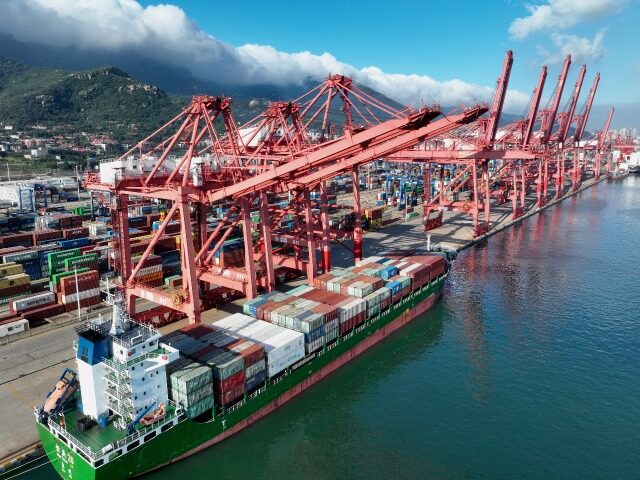The Council on Foreign Relations (CFR) released a report this week that found China has become a leading power in operating seaports across the globe, as well as “the world’s largest trading country and second-largest economy.”
China owns or operates a seaport on every continent except Antarctica and, at last count, it had stakes in 92 active seaport projects.
“Chinese President Xi Jinping’s launch of the Belt and Road Initiative in 2013 and the introduction of the Twenty-First Century Maritime Silk Road, which connects China to Europe and the Arctic Ocean via the South China Sea and the Indian Ocean, have supercharged China’s overseas port investment and construction activities,” CFR said.
Interestingly, China became a dominant port power without becoming a major naval power, at least not yet. The Communist tyranny developed “significant geoeconomic influence over international sea-lanes and commercial ports underpinning the global flow of goods” without building many naval bases outside its borders.
The People’s Liberation Army Navy (PLAN) has certainly grown large enough for force projection. The U.S. Department of Defense (DOD) reported last month that China now has “the world’s largest navy, with a battle force of more than 370 ships and submarines,” including three aircraft carriers and three amphibious assault ships. China’s air force is also “rapidly catching up to Western air forces,” according to U.S. officials.
China’s network of overseas ports is impressive, but its domestic ports are nothing to sneeze at. China runs some of the world’s largest and busiest container ports, led by Shanghai, which has been the world’s most active port for 13 years running.
CFR looked at China’s port infrastructure and determined that many of its “commercial” ports could be easily repurposed to hold warships. PLAN ships have paid “friendship visits” to a number of these ports, possibly testing both their physical capacity and the local political climate for future military use.
The report authors thought it was “inconceivable” that China could get away with docking warships at the Port of Los Angeles, even though the facility is physically capable of handling them, although after watching California Governor Gavin Newsom’s obsequious conduct during his recent trip to China, the word “inconceivable” might not mean what CFR thinks it means.
CFR thought increased Western scrutiny and the “de-risking” movement, in which more foreign money is pulling out of China than dictator Xi Jinping anticipated, might prevent China from using its massive port network to project military influence. Beijing could, however, “influence global trade and logistics” in various ways by controlling so much of the world’s port capacity.
“China’s leverage is in its varied degrees of investment and ownership in the world’s busiest and most-connected ports, which underpin the global flow of goods,” CFR concluded.
The United States and China’s regional rival India are beginning to take steps to curb Beijing’s port dominance. On Wednesday, the U.S. announced $553 million in funding for a port terminal in Sri Lanka’s capital city of Colombo, to be developed by Indian tycoon Gautam Adani.
The U.S. International Development Finance Corporation (DFC), an agency established in response to China’s massive Belt and Road Initiative (BRI), said the port project would boost Sri Lanka’s economic growth and enhance its “regional economic integration, including with India.”
“It is a high priority for the U.S. to be active in the Indo-Pacific region. It is obviously the engine of economic growth for the world,” said DFC chief executive Scott Nathan.
Nathan said DFC’s loans would help Sri Lanka “expand its shipping capacity, creating greater prosperity” without “adding to sovereign debt.”
This is a vital consideration, as Sri Lanka was driven into bankruptcy and political chaos by massive Chinese loans for dubious Belt and Road infrastructure projects. China infamously seized one of Sri Lanka’s ports in 2017 after the BRI client state defaulted on its BRI loans.

COMMENTS
Please let us know if you're having issues with commenting.